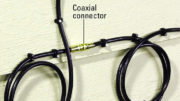5G. You either have it or you want it. It took a little while for this technology to roll out, but now that it’s here, it’s something we just can’t live without. So much so that the 5G universe is already expanding. There’s a new form of 5G coming, and you need to be ready.
A quick lesson on 5G technology
5G isn’t just about speed. A 5G connection will “seem” faster than an LTE one even if they are the same speed. 5G is built with lower latency in mind. Latency is really the most important measure of internet connections, not speed. It’s the time you wait between when you click the button and when something happens. And that, more than raw download speeds, is what makes something seem fast to you.
Latency is also important for things like GPS navigation, self-driving cars, that sort of thing. 5G systems are designed to keep those systems working right, and LTE systems really never were. As we move forward into the future, 5G technology is what we’ll use to get there.
Kinds of 5G
There are three distinct kinds of 5G. Two of them are already available to you because they were part of the original 5G plan. Both are fast, but one is insanely fast.
“Nationwide 5G,” which is more properly called “Low-band 5G,” is 5G service that exists on the same cellular frequencies your phone uses anyway. This is the range from 600 to 900MHz and it it’s the most stable part of the cellular range. It lets you be further from the towers than other cell phone frequencies, too. That’s important if you live out in the suburbs where cell towers are spaced a little further out. This kind of 5G is limited by the amount of bandwidth it can use so speeds rarely go higher than about 100Mbps. That’s fast, but it’s not insane.
“Millimeter-wave 5G,” which carriers like to brand as “UltraWideBand” or “5G+” uses a much higher frequency range, up about 25,000-30,000MHz. This gives plenty of room for high speeds. You’ll be able to connect at speeds well over 1,000Mbps in some areas. The problem with this kind of 5G is that the towers need to be very close. Generally you’ll only get this kind of service if you’re within 500 feet of a tower. That’s no problem in urban areas, stadiums, or any place there are a lot of people. But, it’s too expensive to put a cell tower every 500 feet out in the suburbs.
Now, there’s a third kind of 5G which is just starting to roll out. We’re calling this “mid-band 5G” because it uses frequencies higher than low-band and not as high as millimeter wave. Generally this sort of service will be in the 3,000MHz range. It’s expected to give you better speeds than low-band but not as good as millimeter-wave. And, in many cases, you’ll get that speed up to 1 mile from the tower.
Now that we have that out of the way…
Let’s talk about the cell booster situation. As people become addicted to the speed and low latency of 5G, they realize that their homes block a lot of those signals. So, they choose cell phone signal boosters that bring in those outdoor signals and pump them up.
Today’s cell phone signal boosters will work with most nationwide 5G. They don’t care what’s on a frequency, whether it’s 4G, 5G, LTE, or whatever. They just care about the frequency. So, as most carriers are putting 5G on frequencies they used to use for 3G, even the older boosters will give great results.
When it comes to millimeter-wave 5G, there aren’t any boosters because, well, they wouldn’t help anyway. With those high-frequency signals you’re either in range or not. If you’re in range, chances are you don’t need a booster. If you’re not, well, you’re not.
A booster for mid-band?
Now on to the meat and potatoes of the article. Right now in early 2022, there isn’t a cell booster that will work for those mid-band 5G signals. But, then again, there aren’t any phones that work with them either. You’ll see them in the next few months most likely. Getting the booster situation going will take a little longer. I do expect to see some sort of mid-band 5G booster solution in the next few months but it will probably be designed for very large installations. Units for home and RV use aren’t going to be around for a bit longer.
When those boosters do arrive, you’ll want one. I’m guessing by ’24 that mid-band 5G will be a very big deal and practically every phone will support it. However, since the range is not as great as low-band 5G fewer people will get strong mid-band 5G at home. A booster will be super important.
Should you wait?
With what I’ve told you, you might be tempted to wait before getting a cell phone signal booster system. I wouldn’t wait. Why not get the benefit you need now? When a new system comes out, you can get it then and it probably won’t cost as much as your new phone. It will be a worthwhile upgrade to be sure, but it’s not worth sacrificing the speeds you want to get today.
When you’re ready to buy a cell phone signal booster, check out the great selection at Solid Signal! We have the booster you need from all the major manufacturers. Not sure what you need? Call us at 888-233-7563 or fill out the form below!





